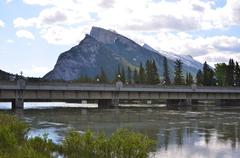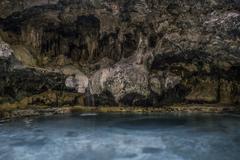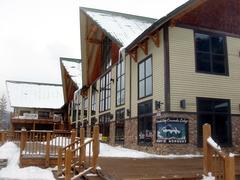Dave White Block Banff: Visiting Hours, Tickets, and Complete Tourist Guide
Date: 03/07/2025
Introduction
The Dave White Block is a historic landmark in the heart of Banff, Alberta, representing the town’s vibrant commercial heritage, architectural legacy, and community spirit. Originating in the late 19th century, the building is closely associated with David White—a Canadian Pacific Railway section foreman turned pioneering entrepreneur—whose family business shaped Banff’s evolution from a railway outpost to a world-renowned mountain resort (Waymarking.com; Banff Heritage Corporation).
With its distinctive Edwardian commercial style, red-brick façade, and preserved ghost signs, the Dave White Block offers a rare glimpse into Banff’s early development. Today, it remains a focal point for heritage walks, photography, shopping, and cultural exploration, seamlessly integrating historical preservation with modern-day commerce (Royal Architectural Institute of Canada; Banff Heritage Walking Tour).
This comprehensive guide explores the history, architecture, and cultural significance of the Dave White Block, with up-to-date details on visiting hours, accessibility, nearby attractions, and practical travel tips. Whether you’re a history buff, photographer, or casual visitor, this article will help you make the most of your visit to this iconic Banff historical site (Banff & Lake Louise Tourism; Whyte Museum).
Contents
- Historical Background and Evolution
- Architectural Features and Preservation
- Cultural and Economic Significance
- Visiting Hours, Tickets, and Accessibility
- Special Events, Tours, and Photo Spots
- Practical Visitor Tips
- Responsible Tourism and Cultural Respect
- Frequently Asked Questions
- Summary and Visitor Recommendations
- Sources and Further Reading
Historical Background and Evolution
Early Origins
The Dave White Block traces its roots back to 1894, when David White established the Park Store on Banff Avenue after leaving his role with the Canadian Pacific Railway (Waymarking.com). As Banff transitioned from a railway settlement to a tourist gateway, the White family’s business became central to the town’s economic and social life, eventually evolving into Dave White & Sons. The building became a hub for residents and tourists, reflecting Banff’s transformation and entrepreneurial spirit.
Growth and Redevelopment
Located on the 200-block of Banff Avenue, the Dave White Block underwent several expansions in response to Banff’s growing population and tourism. The structure’s evolution included additions for office and residential space, while renovations in recent decades have balanced preservation with modernization (Royal Architectural Institute of Canada). The building’s association with the White family—key figures in Banff’s civic and recreational history—cements its status as a cornerstone of the community.
Architectural Features and Preservation
Distinctive Edwardian Style
Built in the early 20th century, the Dave White Block exemplifies Edwardian commercial architecture:
- Red-Brick Façade: A rare feature in Banff, signaling prosperity and permanence.
- False-Front Design: Extends above the roofline for a striking street presence.
- Large Display Windows: Designed to attract customers and maximize light.
- Decorative Cornices and Trim: Reflect Edwardian craftsmanship.
- Ghost Signs: Faded advertisements offer a direct link to the building’s origins (Waymarking.com).
Preservation Efforts
Listed on Banff’s municipal heritage inventory and the Alberta Register of Historic Places, the Dave White Block is protected by strict conservation guidelines (Alberta Register of Historic Places). Restoration projects have focused on retaining original materials, preserving the ghost sign, and sensitively adapting the building for contemporary use (Banff Heritage Corporation).
Cultural and Economic Significance
Community Role
The Dave White Block has always been more than a commercial building. It served as a gathering place for locals, a social hub, and a symbol of Banff’s growth. Today, it houses a diverse mix of shops and cafes, supporting the local economy and contributing to Banff’s reputation as a vibrant mountain community (Banff & Lake Louise Tourism).
Heritage and Tourism
The building is an essential stop on heritage walking tours and a favorite subject for photographers. Its ongoing use demonstrates Banff’s commitment to blending history with modern life, inspiring both pride among residents and curiosity among visitors (Banff Heritage Walking Tour).
Visiting Hours, Tickets, and Accessibility
- Visiting Hours: The Dave White Block is open to the public as part of Banff’s commercial core. Most businesses operate between 9:00 AM and 6:00 PM Monday to Saturday, and 11:00 AM to 5:00 PM on Sundays, but hours may vary by tenant and season.
- Admission/Tickets: No admission fee or tickets are required to view the building exterior or enter common areas. Access to interior spaces depends on individual businesses.
- Accessibility: The ground floor and sidewalks are wheelchair accessible. Some upper floors may have limited access.
- Getting There: Located at the intersection of Banff Avenue and Caribou Street, the block is easily reached on foot, by public transit (Roam Transit), or by car (public parking nearby, limited in peak season) (banfflakelouise.com).
Special Events, Tours, and Photo Spots
- Heritage Walking Tours: The Dave White Block features prominently in guided and self-guided heritage tours. Check with the Banff Heritage Corporation or Whyte Museum for current offerings.
- Community Events: Banff Avenue hosts festivals, parades, and seasonal celebrations, often using the Dave White Block as a backdrop (Banff & Lake Louise Tourism).
- Photography: Best times are early morning and late afternoon for soft light. The building’s façade and ghost sign are especially photogenic.
- Nearby Attractions: Whyte Museum, Banff Park Museum, Cave and Basin National Historic Site, and the Bow River Trail are all within walking distance (Banff Adventures).
Practical Visitor Tips
- Best Season: Summer (June–September) offers long days and lively events but is busiest. Shoulder seasons (May, October) are quieter.
- Park Pass: All visitors to Banff National Park (including downtown) require a valid park pass (Banff & Lake Louise Tourism).
- Amenities: Public restrooms are nearby at Banff Central Park and the Visitor Centre. Downtown Banff offers free public Wi-Fi.
- Sustainability: Support local businesses and practice Leave No Trace principles.
Responsible Tourism and Cultural Respect
Banff sits on Treaty 7 territory, traditional lands of the Niitsitapi (Blackfoot Confederacy), Îyârhe Nakoda, Tsuut’ina, Métis Nation of Alberta, and other Indigenous peoples. When visiting, reflect on these histories and support ongoing reconciliation (Banff History and Heritage).
Frequently Asked Questions (FAQ)
Q: Do I need a ticket to visit the Dave White Block?
A: No ticket is required to view the building exterior or common areas. Entry to inside businesses depends on their policies.
Q: What are the visiting hours?
A: Most businesses operate between 9:00 AM and 6:00 PM (Monday–Saturday), 11:00 AM to 5:00 PM (Sunday), but check individual tenants for specifics.
Q: Is the building wheelchair accessible?
A: The ground floor and sidewalks are accessible. Interior access may vary by business.
Q: Are guided tours available?
A: Yes, heritage walking tours often include the Dave White Block.
Q: Can I take photographs?
A: Absolutely! The façade and ghost sign are popular photography subjects.
Summary and Visitor Recommendations
The Dave White Block is a cornerstone of Banff’s historical landscape, embodying over a century of architectural resilience and commercial vitality. Its preserved Edwardian features, ghost signs, and central location make it a must-see for heritage enthusiasts and casual visitors alike (Alberta Register of Historic Places; Parks Canada). Enjoy the pedestrian-friendly surroundings, join guided tours, and explore nearby museums to enrich your Banff experience. For up-to-date information, check the Banff Visitor Centre and consider using the Audiala app for heritage walks and local insights.
Sources and Further Reading
- Waymarking.com
- Banff Heritage Corporation
- Royal Architectural Institute of Canada
- Banff Heritage Walking Tour
- Banff & Lake Louise Tourism
- Whyte Museum
- Alberta Register of Historic Places
- Parks Canada
- Banff History and Heritage
- Banff Visitor Centre
- Banff Adventures
For more information on Banff’s heritage, download the Audiala app for curated audio tours and visitor tips. Plan your trip and immerse yourself in Banff’s living history today.



